Welcome to the latest edition of Coasters-101 where we’ll answer the question how is roller coaster track made and explain what some of the latest track fabrication techniques.
Tubular roller coaster track is typically formed by heating and then permanently bending steel pipe into the desired shape. However, this process can cause significant fatigue in the material of the pipe. The roller coaster track needs to support static loads during construction and installation and dynamic loads as a coaster train travels along it. During the lifetime of the roller coaster, the stresses due to the aforementioned loads along with the initial manufacturing stress results in the pipe needing to be replaced- a very costly endeavor. Disneyland’s Space Mountain opened in 1977 but closed in 2003 for a lengthy refurbishment during which all of the original track was completely replaced.
The other drawback for using bent steel rods or pipes is the resulting shape is not always one-hundred percent accurate, which can potentially become a large issue when you are dealing with thousands of feet of pipe. Metal typically bends at either its weakest point or where the strongest force is applied over a span. Manufacturers then attempt to fix the pipe by bending it again or end up settling for a less-than-perfect piece. B&M and their track manufacturers are very secretive about how they bend their steel.
New manufacturing techniques are being invented to minimize manufacturing stresses, increase accuracy, and reduce cost. One example of a relatively new approach can be seen on New Texas Giant, where the rails are fabricated by welding together custom cut planar pieces- no heating or bending required! Special jigs and figures have to be designed in order to hold all the pieces in place as they are joined together. These sections are then shipped to the construction site for installation where they are bolted to the support structure and to other track segments. This process should grant the track a longer lifetime.
Another example is Intamin’s plug and play wooden coaster track, as seen on Six Flag Great Adventure’s El Toro. On a wooden roller coaster, the wood usually has to be replaced every four to seven years. Typical wooden coaster track is assembled on the construction site by carpenters who are exposed and must deal with weather elements while trying to complete the arduous task of assembling the track. Wooden coasters have a large tolerance and often deviate from the desired design due to the manual fabrication processes. These deviations and large tolerance result in rough and bumpy rides. Intamin’s solution to these issues is to industrially prefabricate track segments which can then be shipped to the construction site and mounted on the support structures, similar to a modern steel coaster. The rails can be milled to a precise form with a very tight tolerance in a machine shop, not only improving the ride experience but reducing construction time as well as service life. In fact, the ride becomes so smooth that some argue these are no longer wooden roller coasters and should be classified as something entirely different.
To learn more about how coasters are designed check out Coasters 101: An Engineer’s Guide to Roller Coaster Design.

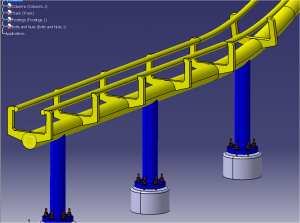
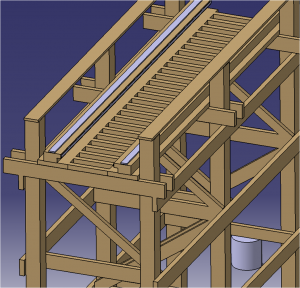
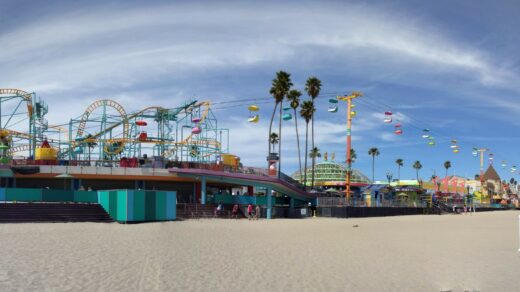

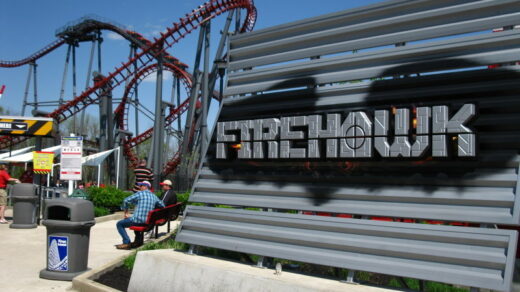






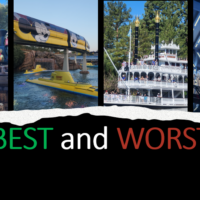




Good info here! The tubular steel formation explains why Arrow Dynamics coasters are sometimes rough and why some of them are slowly starting to be torn down, like Great American Scream Machine, or the track completely replaced. I don’t think many of the higher stressed Arrow coasters will survive past their 40th year without some sort of an overhaul.
Great article, as always. 🙂
Really interesting! I always wondered how they made all that track…and how B&M and Intamin make it so perfectly – looks like that’ll have to wait!
I think your saying “Wooden coasters have a large tolerance and often deviate from the desired design due to the manual fabrication processes” is not an accurate statement, and certainly not why prefabricated wooden coaster track feels different.
Prefabricated track feels the way it does because the track is glued to form a solid unit before it is cut to the exact desired shape, rather than laminated with nails. It is also fixed to each bent of the coaster, creating a rigid connection and rigid system, while traditional wooden coaster tracks “float” on the structure.
I think that wood coaster track rarely deviates from the desired design initially, though differences in the initial quality of design/construction and operators’ maintenance may allow slight deviations from the original designed centerline over time. This, plus a combination of poorly-tracking trains on some coasters, is what causes “rough and bumpy rides”, but that is not a generalization that should be assigned to all wooden coasters.
Also, Rocky Mountain’s track certainly does need to be bent. It’s just easier because it’s individual pieces of flat steel (prior to welding), rather than a hollow section.
I appreciate these “Coaster-101” features, but you should be careful.
Thanks for the feedback. Yeah, that may have not been the best written sentence, deviate is a pretty open ended word and almost makes it sound like the carpenters can do whatever they want which is not the case. Rocky Mountain does bend their track but theoretically if you have big enough steel stock you could machine every piece with no bending, although that would be very impractical.
Rmc does not bend there track!
The written staatements are very close to actual track sections. One sleeper may exhist on all steel coaster and woodies. If a certain has excessive structure deflection/columns/ the track section then becomes a linkage which tends to restrict framing from deflection. this then can cause
early fatigue problem’s, and or track failure, I have seen this happen and all should condider this, Look for structural deflection which finds it way up to a track section
I never knew that is how they made the track!I thought they used molds.
I liked this. Well written and easily digestible. I just rode El Toto yesterday after a 12 year hiatus And I’m happy to report it’s running as smooth and fast as ever. Now I know why! ?
I liked this. Well written and easily digestible. I just rode El Toto yesterday after a 12 year hiatus And I’m happy to report it’s running as smooth and fast as ever. Now I know why! ?
???